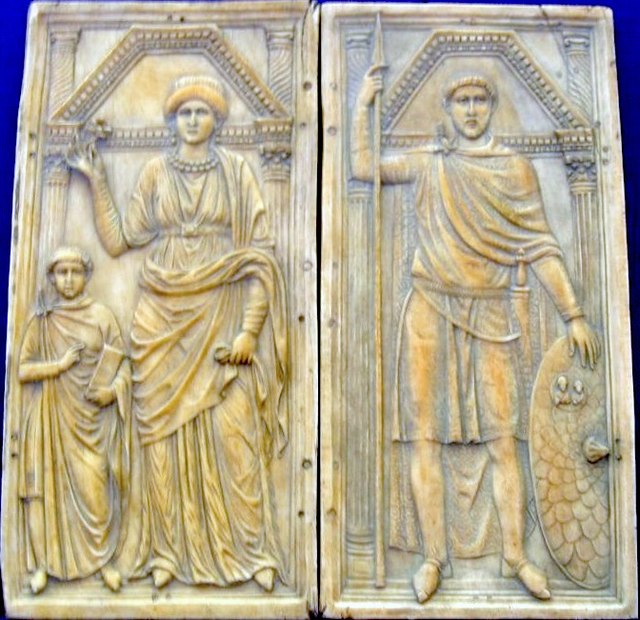Flavius Aetius (magister militum)
Flavius Aetius was a Roman general and statesman of the closing period of the Western Roman Empire. He was a military commander and the most influential man in the Empire for two decades (433–454). He managed policy in regard to the attacks of barbarian federates settled throughout the West. Notably, he mustered a large Roman and allied (foederati) army in the Battle of the Catalaunian Plains, ending a devastating invasion of Gaul by Attila in 451, though the Hun and his subjugated allies still managed to invade Italy the following year, an incursion best remembered for the ruthless Sack of Aquileia and the intercession of Pope Leo I.
Possible relief of Aetius, although this Sarcophagus has also been thought to depict Stilicho (d. 408 AD), and can be dated even earlier (between 387–390 AD), during the reign of Theodosius I
Coin of Bonifacius Comes Africae (422–431 CE).
The Monza Cathedral Diptych, which may have been commissioned on Aetius' first consulship. It may also depict Stilicho.
The gens Flavia was a plebeian family at ancient Rome. Its members are first mentioned during the last three centuries of the Republic. The first of the Flavii to achieve prominence was Marcus Flavius, tribune of the plebs in 327 and 323 BC; however, no Flavius attained the consulship until Gaius Flavius Fimbria in 104 BC. The gens became illustrious during the first century AD, when the family of the Flavii Sabini claimed the imperial dignity.
The emperor Vespasian, from the Museo Nazionale Romano.
Constantine and Helena. Mosaic in Saint Isaac's Cathedral, Petersburg, Russia





